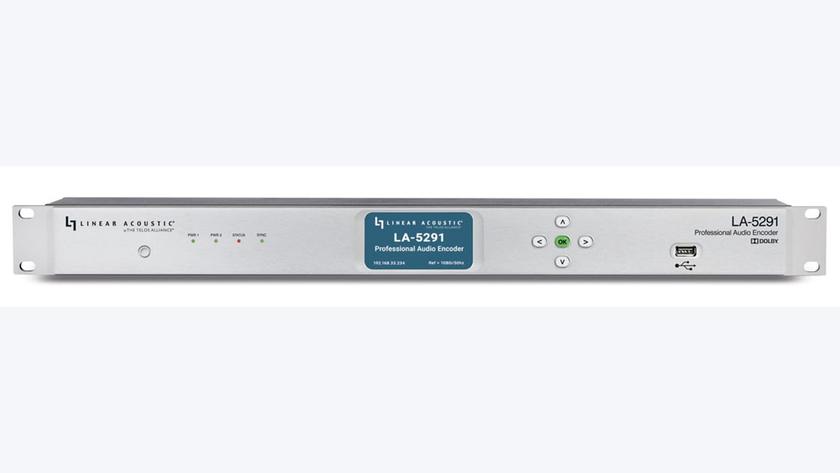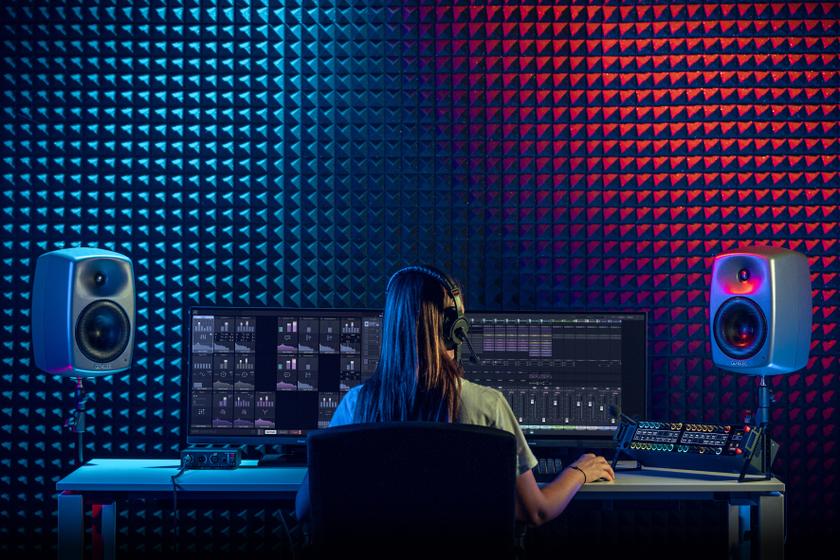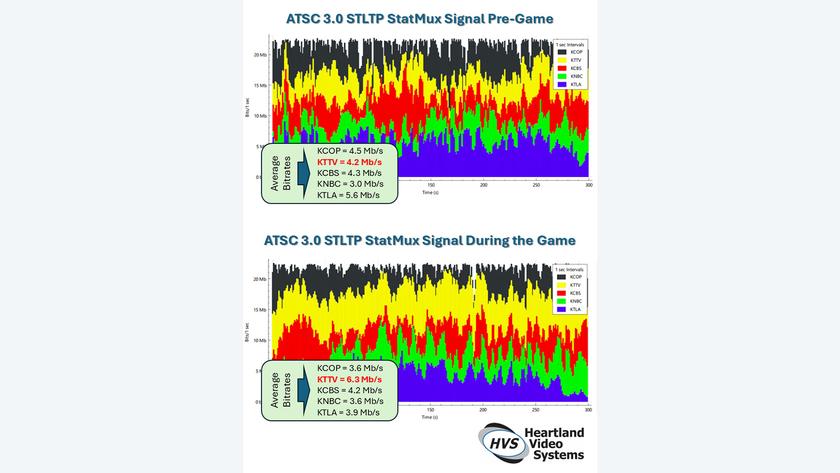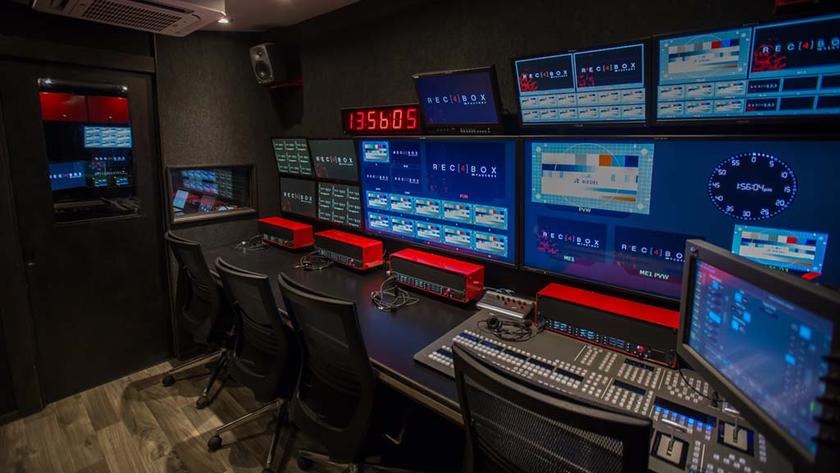Production Switchers Ready for Streaming Reality
With a head start in IP capability, switchers thrive in the current climate of remote production
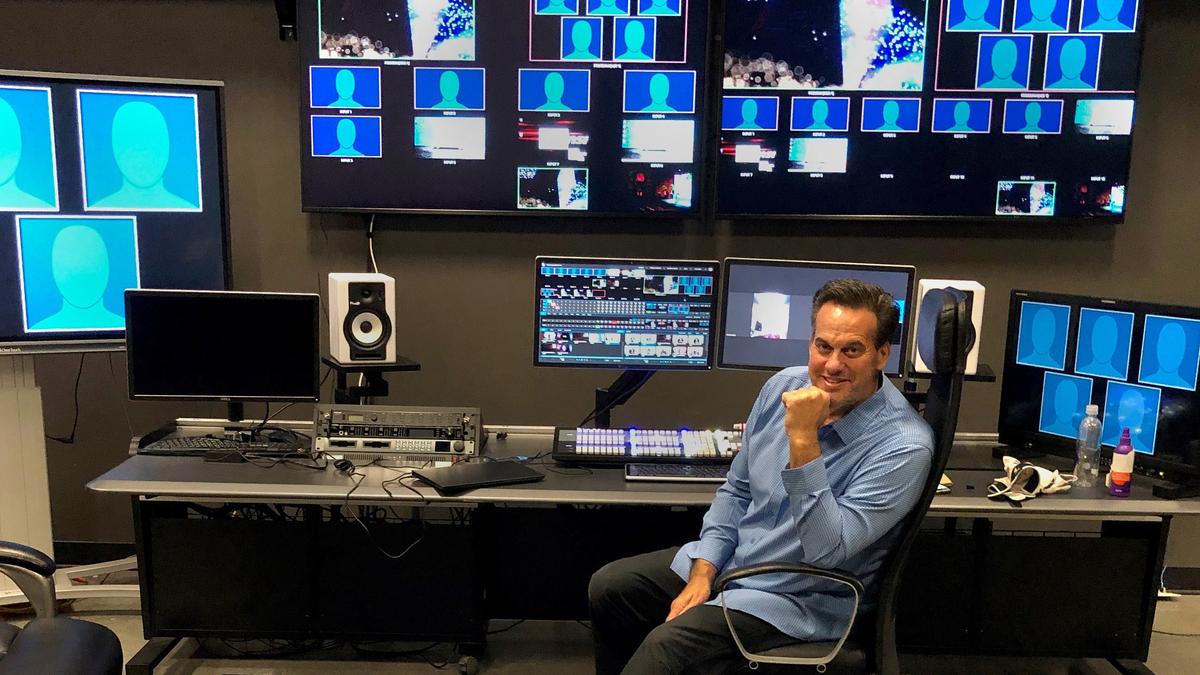
WASHINGTON—Even in this COVID-crazy year, there is still lots of video creation that involves the use of production switchers. It’s easy to think of production switchers as being in the domain of studios, production trucks and other enclosed facilities that have shut down for the duration of the pandemic, but the ability to stream the output of switchers makes them key for delivering quality programming in a range of situations.
So not only are production switchers an active product category in this seemingly written-off year, they have thrived and continue to see innovation. One of the pioneers in combining switching with streaming is NewTek, which recently added the TriCaster 2 Elite to its family of software-dened live-production systems.
The TriCaster 2 Elite is capable of dual 4Kp60 mix outputs, a single 4Kp60 output with 4x 1080p60 outputs, or 8x 1080p60 outputs—all simultaneously delivered over SDI and NewTek’s popular NDI IP protocol.
“What sets the TriCaster 2 Elite apart is our groundbreaking ‘Live Call Connect’ feature that offers support for up to nine guests via Zoom, Teams, Tencent, Discord, Skype and more,” said Liam Hayter, senior solutions architect for the San Antonio-based company. “All run natively on the system with a dedicated multiviewer mode. Live Call Connect will also analyze the call and automatically separate out the nine callers into individual video inputs for use on the system, and this also includes talkback.”
Switcher manufacturers have embraced IP connectivity in addition to more traditional television standards such as SDI. One example is the Grass Valley Kahuna 9600 4K production switcher, which can be tied to other production resources using the company’s GV Orbit networking management.
At For-A, the company has seen good response to its HVS-490 3G/4K video production switcher. An ace at streaming applications, the HVS-490 packs a lot of popular streaming features into a small package.
“[The HVS-490] provides the most ‘bang for your buck,’” said Adam Daniul, director of sales for the southeast, south central and Midwest regions at For-A America. “It’s built for reliable 3G-SDI or 4K live production, and is ideal for image magnification [I-MAG] and live streaming applications. It’s easy to afford, easy to learn, and easy to use.”
LIVE & POST PRODUCTION
Blackmagic Design recently announced the ATEM Mini Pro ISO, a low-cost switcher that integrates live production into a post-production workflow. The ATEM Mini Pro ISO has a new livestream recording engine that allows all video inputs to be recorded, allowing a live production to be easily edited after the conclusion of the event.
“2020 has been an unprecedented year that has caused all of us to adapt to a ‘new normal,’ which for many of our customers meant pivoting from what once was a live event to now remote live streams or a hybrid model,” said Bob Caniglia, director of sales operations for the Americas at Blackmagic Design. “In that vein, we introduced the ATEM Mini Pro and ATEM Mini Pro ISO as affordable live-production switchers that facilitate remote workows and make it easy for our customers to create professional multicamera productions for live streaming to Zoom, YouTube, Twitch and more.”
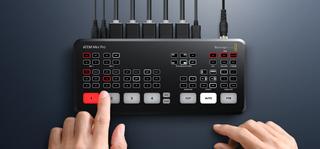
Panasonic recently introduced KAIROS, an IT/IP-centric platform that offers an open architecture system for live video switching with input/output flexibility, resolution and format independence, and unlimited ME scalability.
“Unlike conventional switchers, KAIROS isn’t restricted by the number of MEs or keys,” said Michael Bergeron, senior product manager for live production systems at Panasonic. “The platform achieves higher performance by using the power and flexibility of its CPU and GPU, balancing total processing loads without the configuration constraints of traditional hardware-based systems. It also incorporates software that processes SDI, ST 2110 and NDI streams of independent resolutions such as HD and UHD to support the transition to live IP workflows.”
12G SINGLE-LINK CABLING
Ross Video has a range of production switchers that meet the needs of virtually any television facility. One example from the company is the Acuity, which can handle signals from SD to 4K, and will accept up to 12G single-link cabling for uncompressed 4K.
Datavideo has found a niche among smaller users that need maximum features packed into minimum space. The company’s latest model is the KMU-200, a streaming-friendly switcher that can be fed 4K signals and provides an HD output that displays “regions of interest” from the 4K image. In other words, you can make two 4K cameras look as though you’re using several HD cameras.
The KMU-200 supports an additional HDMI input for a computer with a PowerPoint presentation to add to a user’s live production, according to Rob Read, director of business development for Datavideo US, adding that the KMU-200 also supports vertical video as well.
“This switcher also has built-in dual streaming to two platforms, and provides 9:16 and 16:9 formats directly to content distribution networks that support vertical streaming, such as Facebook or Instagram,” Read said.
8K CAPABILITY
Although most companies have products that can handle 4K, at least a couple are pushing into 8K capability.
“Blackmagic Design introduced the ATEM Constellation 8K in April 2019 as a solution for customers who are currently working in HD or Ultra HD but want to future proof their investments,” Caniglia said. “The ATEM Constellation 8K is designed as an 8K, Ultra HD and HD live production switcher with so many features that customers can combine them all to make an incredibly powerful 8K switcher. In 8K, it features 10 Quad Link 12G-SDI 8K inputs, 8K DVE, standards-converted 8K inputs, 8K SuperSource, 8K chromakey and 8K multiview.”
Other companies have 8K on their radar, but are focusing on providing more features at 4K than making the next resolution leap.
“Panasonic currently offers the AV-UHS500 video switcher which is a successor to the AV-HS410 that operates almost identically in 12G as it does in HD,” Bergeron said. “All the inputs and outputs are 4K capable... for use in a variety of live production applications. KAIROS is not limited to any format, as it can work with 720p, 3G, 12G or computer monitor resolutions simultaneously. KAIROS does not currently support 8K; however, given expected increases to bandwidth and GPU processing power, 8K support for KAIROS is inevitable.”
USER PERSPECTIVE
Perhaps the bottom line on the subject of 8K switching comes from a user, Brett Casadonte, president and co-founder at GlobeStream Media LLC in Dallas, which was founded eight years ago to support live production projects.
“We chose to build our business around Blackmagic Design’s ATEM production switchers because we felt they offered the best price/performance of the various offerings we considered,” Casadonte said. “About a year ago, we began engineering work on a small remote integration production facility. When we were considering what switching hardware we would use, it quickly became obvious the ATEM Constellation 8K was going to be the best choice.”
But that doesn’t mean that there is high demand just yet for 8K production.
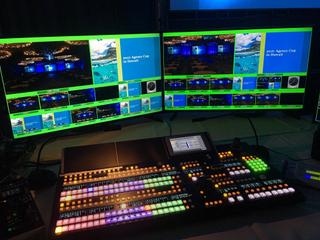
“While we are not currently doing any 8K productions, it’s great to know that as the industry grows into 8K, we will already be positioned to provide this service to our clients,” Casadonte said. “In general, 8K production is still in the very early stages, and there is a lot that needs to be considered, not the least of which is transmission and distribution.”
SIMPLE NO MORE
There once was a time when video production switchers selected on-air sources, keyed in titles and performed modest transition effects. Not anymore. Switchers today do all those things, plus act as storage for still images, graphics and video clips, as well as provide control for video playbacks from servers and dedicated players. How much more capability can be built into switchers without overloading the operators?
“With the NewTek VMC1 system—think of it as a super-powered TriCaster—we added the ability to route NDI signals downstream of system, and we’ve brought this to the TriCaster 2 Elite, too,” Hayter said. “The NDI output matrix enables operators to drive screens and video walls on set, on stage, even to distribute NDI video and audio around venues. Like every other aspect of TriCaster, this is macro-controllable. The integrated macro engine on all our production systems can create shortcuts and sequences of operation with a single keypress.”
Hayter says NewTek has delivered visual radio studios where PTZ cameras, robotic dollies and tracks, and real-time tracked virtual sets work in tandem from a single keystroke.
“In the corporate space, we have projects where lighting, in-room audio systems and video wall solutions are similarly controlled from simple webpage buttons through our LivePanel controls,” he added.
It has been a strange year, and we’re all still figuring out how to do the things we want to do in this new environment. However, one thing that’s clear is that well-designed products continue to be useful and in demand and meet the needs of real users.
Broadcast equipment manufacturers started building IP capabilities into switchers more than a decade ago, and that has given this product category a leg up in the bid to stay relevant during the COVID-19 lockdown. That said, I don’t think there’s anyone who wants this new status quo to go on indefinitely—just that we should be glad that production switcher manufacturers were among the best prepared for our current streaming reality.
Get the TV Tech Newsletter
The professional video industry's #1 source for news, trends and product and tech information. Sign up below.
Bob Kovacs is the former Technology Editor for TV Tech and editor of Government Video. He is a long-time video engineer and writer, who now works as a video producer for a government agency. In 2020, Kovacs won several awards as the editor and co-producer of the short film "Rendezvous."

